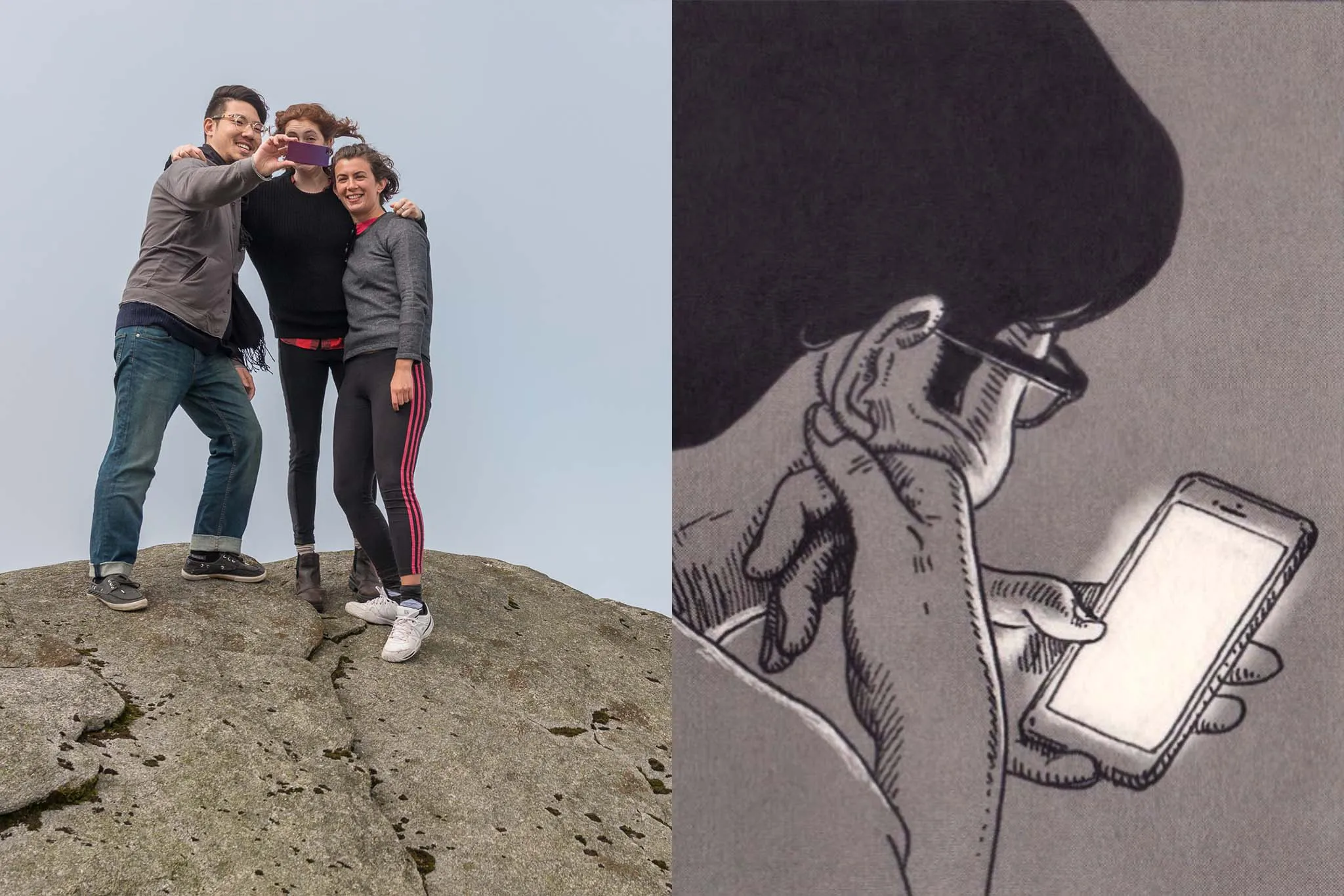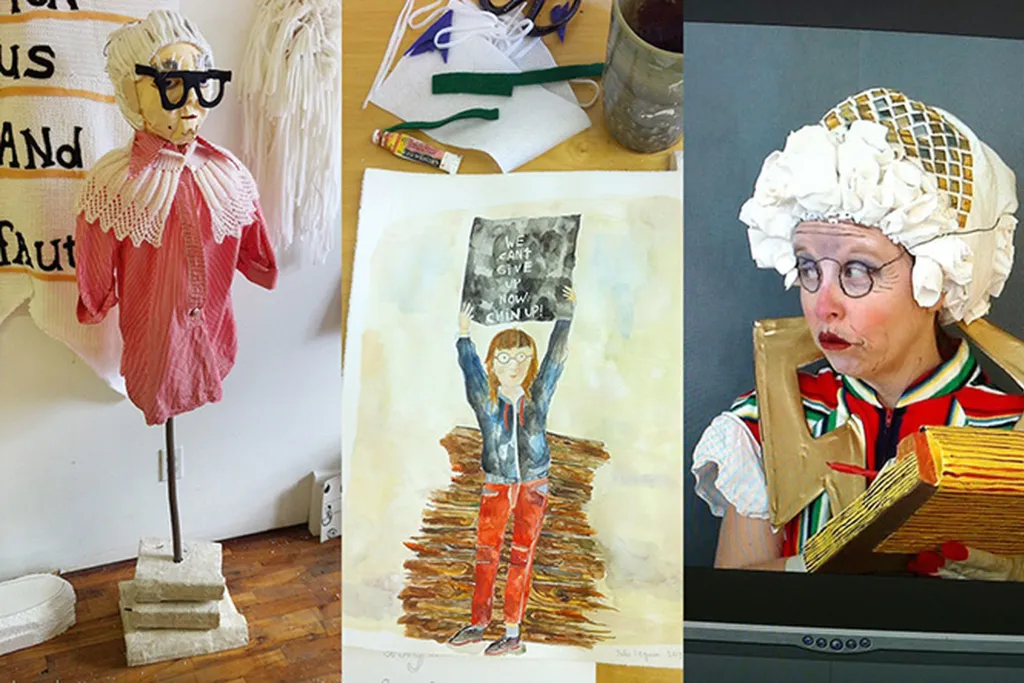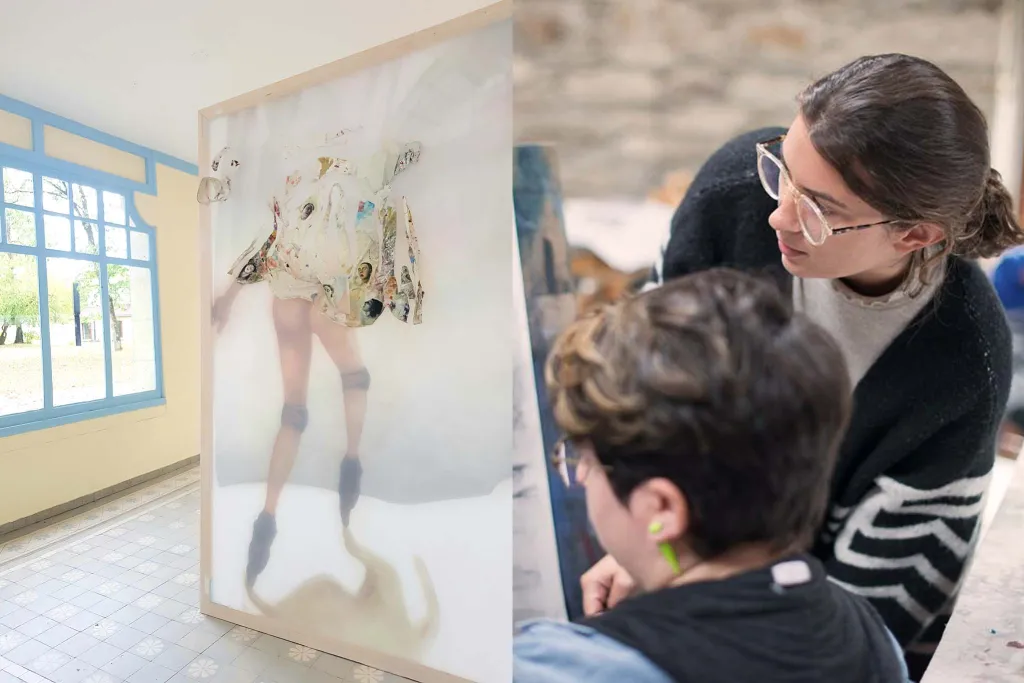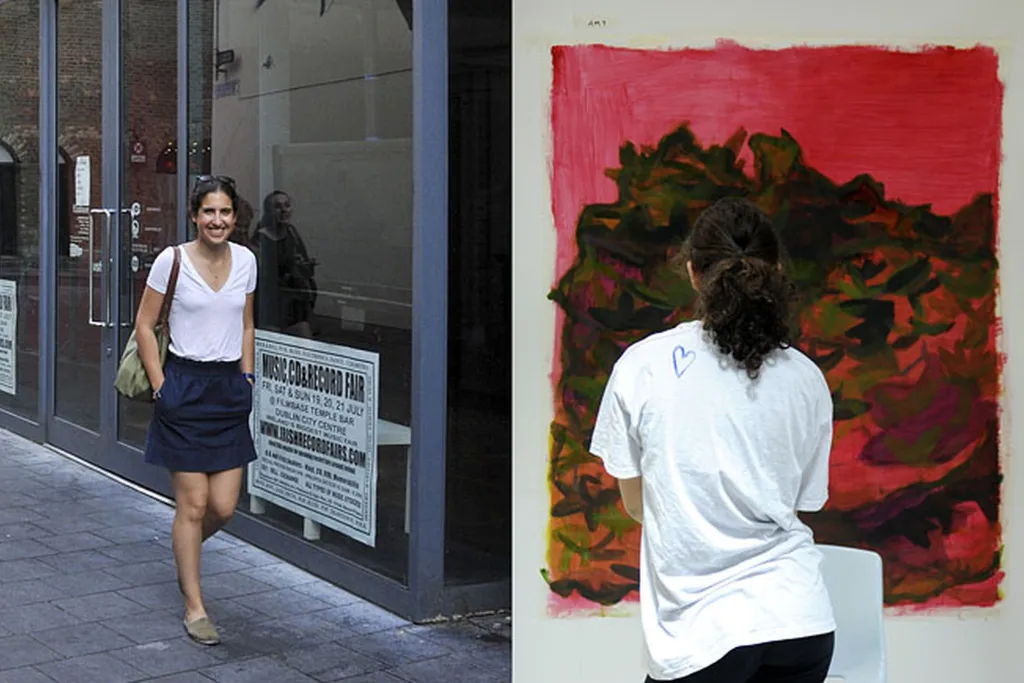Woosung Lee

Woosung Lee participated in our residency program in the autumn of 2014. Based in Seoul, Korea, his painting and drawing practice draw upon memory, nostalgia and humor to create whimsical tapestries that can exist both within a gallery setting or unexpected urban settings. In 2017 he provided a wonderful illustration for a limited edition run of mugs to fund the scholarship program for Art on the Farm, our summer art program.
In 2009 Woosung received his BFA in painting from Hongik University, Seoul, Korea and in 2012, his MFA from Korea National University of Arts, Seoul, Korea. Woosung has exhibited his work widely both in Korea and abroad and has taken some time away from his active studio practice to answer a few of our questions.
CHS: Can you share with us any recent projects? What are some themes you’ve been exploring?
My most recent project was a solo exhibition titled Quizas Quizas Quizas at Amado Art Space, Seoul in 2017. The major motives for this exhibition were based on thought processes around how to archive memories from images saved on my phone, specifically, how the images become structured within a timeline of vertically and horizontally organised grids. Personally meaningful moments, memories of being somewhere at a given time, and times that would never be back were simplified as line drawings. I wanted to make a mixture of moments from the past and the present to counter the notion that time passes through or fades away. It was a very meaningful process because it helped me recall so many different memories. Even now, I am recreating another timeline via the Instagram handle gawi_bawi_bo.
Three reoccurring themes within my work are notions of everyday life, memories, and humour. For me, everyday life is about the people that I have interacted with and the stories from those moments. Memories are collections of different episodes in my past and/or reconstructed moments from the past and present. Humour is at the core and ultimately how I process and express my ideas. I love recreating relatable moments, capturing the hidden wit or illustrating a humorous twist.
CHS: What do you remember most vividly from your residency at Cow House? How do you feel making work away from home, in general, helps shape your practice?
The most remarkable memory about Cow House is the little forest behind the residential building. I walked slowly in its quietness and sometimes I just listened to the birds chirping sounds. Sometimes it just felt like I was walking on a soft carpet when I walked around in the forest, so I literally touched the bunches of moss at one point. It is something that can be hardly seen in Seoul; maybe that is why I was more attached to it.
Before I returned home, I actually hung a paper heart in the forest. Probably it is not there anymore…
I was in Ireland for six weeks including four weeks during the residency program and my own additional travel. I thought it was necessary to stay away from familiar surroundings for a while. I needed a break and wanted to work on my drawings and paintings while being in a more relaxed state.
One day, I hung my painting on the clothesline beside Rosie’s parent’s home and recorded the way the work flowed naturally with the wind. When I saw it, I wanted to develop the idea further upon my return home. This is how the Folded Then Unfolded series was born and later, it became the theme for another solo exhibition.
CHS: Memory plays a prominent role in your artistic practice. Are there memories of your time in Ireland that have made their way into your work?
Experiences in Ireland have influenced me a lot in my work. When looking at I MISS YOU closely, experiences at Cow House are reflected in the paintings. Being in a totally new environment makes me curious, excited but somewhat scared and nostalgic for the place I got away from. All these feelings are reflected in my work and take on different shapes and forms. For the four weeks of the residency, which could be considered a very short period of time, I was extremely focused and concentrated on paintings.
CHS: Your paintings and drawings have increasingly been presented in alternative means. Most notably your use of fabric and various installation strategies create the potential for a layered reading. How did you come to this working method? Do you prefer to see your work presented in a private or public setting?
In the beginning, I thought of the paintings on fabric more like flags or curtain walls that would run across space in a gallery. While planning the residency at Cow House, I thought of carrying paintings just like clothing; folding and putting them in a bag to carry. I believe paintings on a loose fabric have tremendous potential.
When considering an installation, I like to paint based on the inspiration that comes from particular places or paint something that is intended for a particular place; similar to the way I worked while in Ireland making paper eyes for the firewood, hanging the painting on the clothesline, and hanging the paper heart in the forest. Sometimes my personal experience initiates the painting and other times the inspiration comes from social issues. My paintings change based on how I relate to specific places, how they might influence me, or encourage the use of specific materials.
Paintings on fabric are easy to exhibit without interfering on places where they are installed, and they harmonise well with any space. Whether indoors or out, places where people are walking around every day hold potential for an exhibition. I actually ran a project based on this idea. Paintings on fabric can easily and naturally merge into any space. I folded the paintings and carried them around; I felt true freedom by doing so. Because I wanted to create more personal interactions, I borrowed the form of cartoons to be more personal and approachable and get closer to the audience.
CHS: You have spent some time participating in international residencies. Can you identify some differences between the art world in Korea and other places you’ve visited?
Ireland was the first place that I visited to work overseas then later, in 2016, I was on a three-month residency program at The Physics Room in Christ Church, New Zealand. I’ve always been a visitor who has stayed for a short period of time so it is not easy to talk about how the art world works in different countries. Rather than talking about differences, if I may, what I commonly found was that the art world was very small and closely interconnected everywhere.
When I was overseas I was a visitor with a full range of freedom so I tried my best to enjoy every moment. As a visitor, I wanted to explore possible ideas and creativity and made the most of all the moments being alone and being a stranger. This experience actually made me find further meaning in what I had around me. Because my own identity didn’t change based on where I was, I wanted to express those never-changing qualities of my identity, who I am, in my work. The series of Visitors was based on my experiences from residencies overseas.
As a person who belongs to the art world in Korea, I can simply explain that as time goes by it has become more supportive. The art market in Korea has predominantly centred around a few internationally well-recognised artists so the government has stepped in to develop programs for emerging artists. It is hard to find any situation that is totally perfect, however, I must say it has been better. There has been a tremendous and continuous effort when compared to the past. Of course, it is quite a pity that the benefits are always limited and therefore, the environment becomes more and more competitions.


